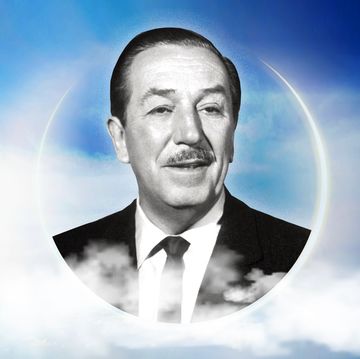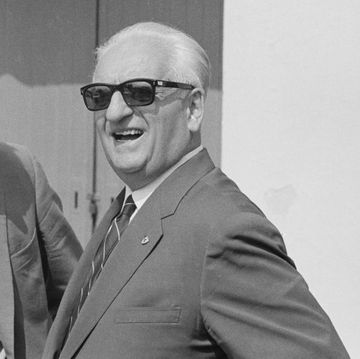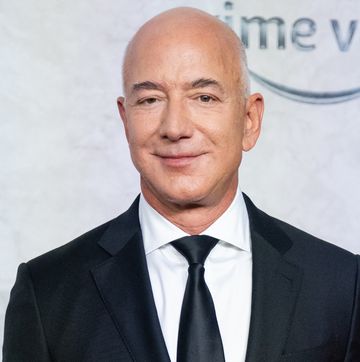(1863-1951)
Who Was William Randolph Hearst?
William Randolph Hearst used his wealth and privilege to build a massive media empire. A founder of "yellow journalism," he was praised for his success and vilified by his enemies. At one point, he considered running for the U.S. presidency. The Great Depression took a toll on Hearst's company and his influence gradually waned, though his company survived.
Early Life and Career
William Randolph Hearst dominated journalism for nearly a half century. Born in San Francisco, California, on April 29, 1863, to George Hearst and Phoebe Apperson Hearst, young William was taught in private schools and on tours of Europe. He attended Harvard College, where he served as an editor for the Harvard Lampoon before being expelled for misconduct.
While at Harvard, Hearst was inspired by the New York World newspaper and its crusading publisher, Joseph Pulitzer. Hearst's father, a California Gold Rush multimillionaire, had acquired the failing San Francisco Examiner newspaper to promote his political career. In 1887, Hearst was granted the opportunity to run the publication. Hearst invested heavily in the paper, upgrading the equipment and hiring the most talented writers of the time, including Mark Twain, Ambrose Bierce and Jack London.
As editor, Hearst adopted a sensational brand of reporting later known as "yellow journalism," with sprawling banner headlines and hyperbolic stories, many based on speculation and half-truths. About one quarter of the page space was devoted to crime stories, but the paper also conducted investigative reports on government corruption and negligence by public institutions. In a few years, circulation increased and the paper prospered.
Building a Media Empire
With the success of the Examiner, Hearst set his sights on larger markets and his former idol, now rival, Pulitzer. He purchased the New York Morning Journal (formerly owned by Pulitzer) in 1895, and a year later began publishing the Evening Journal. He strove to win the circulation wars by employing the same brand of journalism he had at the Examiner. Competition was fierce, with Hearst cutting the newspaper’s price to one cent. Pulitzer countered by matching that price. Hearst retaliated by raiding the World’s staff, offering higher salaries and better positions. By 1897, Hearst’s two New York papers had bested Pulitzer, with a combined circulation of 1.5 million.
In the last decade of the 19th century, politics came to dominate Hearst's newspapers and ultimately reveal his complex political views. While his paper supported the Democratic Party, he opposed the party's 1896 candidate for president, William Jennings Bryan. In 1898, Hearst pushed for war with Spain to liberate Cuba, which the Democrats opposed. Hearst’s own lavish lifestyle insulated him from the troubled masses that he seemed to champion in his newspapers.
Political Career and Children
In 1900, Hearst followed his father's example and entered politics. Having established newspapers in several more cities, including Chicago, Boston and Los Angeles, he began his quest for the U.S. presidency, spending $2 million in the process. The journey didn't last long. Hearst did win election to the House of Representatives in 1902 and 1904. However, maintaining his media empire while also running for mayor of New York City and governor of New York left him little time to actually serve in Congress. Angered colleagues and voters retaliated and he lost both New York races, ending his political career.
On April 27, 1903, Hearst married 21-year-old Millicent Willson, a showgirl, in New York City. It is believed the marriage was as much a political arrangement as it was an attraction to glamour for Hearst. Millicent’s mother reputedly ran a Tammany Hall – connected brothel in the city, and Hearst undoubtedly saw the advantage of being well-connected to the Democratic center of power in New York. Millicent bore Hearst five sons, all of whom followed their father into the media business.
Later Career
After his flameout in politics, Hearst returned full-time to his publishing business. In 1917, Hearst’s roving eye fell upon Ziegfeld Follies showgirl Marion Davies, and by 1919 he was openly living with her in California. That same year, Hearst’s mother, Phoebe, died, leaving him the family’s fortune, which included a 168,000-acre ranch in San Simeon, California. Over the next several decades, Hearst spent millions of dollars expanding the property, building a Baroque-style castle, filling it with European artwork, and surrounding it with exotic animals and plants.
By the 1920s, one in every four Americans read a Hearst newspaper. Hearst’s media empire had grown to include 20 daily and 11 Sunday papers in 13 cities. He controlled the King Features syndicate and the International News Service, as well as six magazines, including Cosmopolitan, Good Housekeeping and Harper's Bazaar. He also ventured into motion pictures with a newsreel and a film company. He and his empire were at their zenith.
The stock market crash and subsequent economic depression hit the Hearst Corporation hard, especially the newspapers, which were not completely self-sustaining. Hearst had to shut down the film company and several of his publications. By 1937, the corporation faced a court-ordered reorganization, and Hearst was forced to sell many of his antiques and art collections to pay creditors. During this time, his editorials became more strident and vitriolic, and he seemed out of touch. He turned against President Franklin D. Roosevelt, while most of his readership was made up of working-class people who supported FDR. Hearst didn’t help his declining reputation when, in 1934, he visited Berlin and interviewed Adolf Hitler, helping to legitimize Hitler’s leadership in Germany.
In 1941, young film director Orson Welles produced Citizen Kane, a thinly veiled biography of the rise and fall of Hearst. Nominated for nine Academy Awards, the film was praised for its innovative cinematography, music and narrative structure, and has subsequently been voted one of the world’s greatest films. Hearst was not pleased. He mustered his resources to prevent release of the film and even offered to pay for the destruction of all the prints. Welles refused, and the film survived and thrived.
Final Years and Death
Hearst spent his remaining 10 years with declining influence on his media empire and the public. He died on August 14, 1951, in Beverly Hills, California, at the age of 88.
QUICK FACTS
- Name: William Randolph Hearst
- Birth Year: 1863
- Birth date: April 29, 1863
- Birth State: California
- Birth City: San Francisco
- Birth Country: United States
- Gender: Male
- Best Known For: William Randolph Hearst is best known for publishing the largest chain of American newspapers in the late 19th century, and particularly for sensational "yellow journalism."
- Industries
- Business and Industry
- Journalism and Nonfiction
- Astrological Sign: Taurus
- Schools
- St. Paul's School
- Harvard College
- Death Year: 1951
- Death date: August 14, 1951
- Death State: California
- Death City: Beverly Hills
- Death Country: United States
Fact Check
We strive for accuracy and fairness.If you see something that doesn't look right,contact us!
CITATION INFORMATION
- Article Title: William Randolph Hearst Biography
- Author: Biography.com Editors
- Website Name: The Biography.com website
- Url: https://www.biography.com/business-leaders/william-randolph-hearst
- Access Date:
- Publisher: A&E; Television Networks
- Last Updated: September 16, 2022
- Original Published Date: April 2, 2014
QUOTES
- You must keep your mind on the objective, not the obstacle.
- You furnish the pictures and I'll furnish the war.
- Try to be conspicuously accurate in everything, pictures as well as text. Truth is not only stranger than fiction, it is more interesting.












